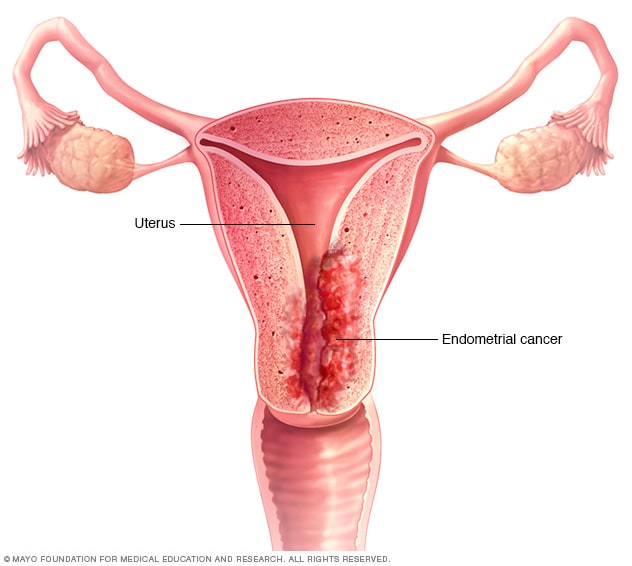Lab 11- My cure for cancer by Alanna DeGroot

Where to look for a cure for cancer?
I chose to break this down to a cure for endometrial cancer, also known as uterine cancer. Because just the term cancer is so broad that I found it quite difficult to narrow it down. If you are looking for a cure for cancer this could be the best way. Pick a type that you want to focus on and look for treatments for that specific area of the body. Look up research that has already been done for that type of cancer. See what has been effective and what hasn't been effective. For endometrial cancer I would talk to doctors that are experts in women's reproductive health; oncologists who have the highest number of patients affected by this type of cancer; and patients who have survived. I would need to study how uterine cancer develops, how it spreads, what are the warning signs, is there anything we can do to try and prevent it. I would also look into what the risks are for current treatments and how we can lessen those risks with a new treatment and cure.
Overview of endometrial cancer:
Endometrial or uterine cancer is a type of cancer develops in the endometrium which is the lining of the uterus. According to the American Cancer Society there are 6 histological types of endometrial cancer they are as follows: adenocarcinoma (the most common type known as endometrioid cancer), uterine carcinosarcoma, squamous cell carcinoma, small cell carcinoma, transitional carcinoma, and serous carcinoma. From there it then gets broken down into grades 1-3 depending on the how aggressive the tumour forming tissues are.
"The American Cancer Society estimates for cancer of the uterus in the United States for 2020 are: about 65,620 new cases of cancer of the body of the uterus (uterine body or corpus) will be diagnosed. About 12,590 women will die from cancers of the uterine body." The Mayo Clinic also does a lot of research and treatment of endometrial cancer. According to oncologists at May Clinic endometrial cancer often detected early because one of the symptoms is frequent bleeding from the vagina. Other symptoms include: vaginal bleeding after menopause, vaginal bleeding between periods, feeling a mass in the pelvic area, losing excessive weight, and severe pelvic pain.
There are several different treatments for endometrial cancer that include:
Surgery- a full hysterectomy is performed which removes the uterus, ovaries, and fallopian tubes. The surgeon will inspect the tissue around the uterine area to make sure the cancer has not spread to any lymph tissue nearby.
Radiation therapy- this is done with either a machine outside your body or one that is placed inside your body.
Chemotherapy- a chemical drug therapy. Can be used in conjunction with surgery if doctors suspect the cancer may have spread to other tissues.
Hormone therapy- taking a medication to reduce the hormone levels in the body. Generally used in cases of advanced endometrial cancer that may have spread to other areas.
Targeted drug therapy- targets weakness within the cancer cells to try and kill them.
Immunotherapy- helps your immune system to try and fight the cancer. In the case of endometrial cancer, this would be a last treatment option if nothing else has worked.
Palliative care- this is used in conjunction with other more aggressive treatments. Palliative care involves a team of doctors and nurses to relieve the pain and discomfort from the cancer and the treatments. They help the patient and their families. This can help a patient feel better, get stronger, and can help their body respond better to treatments.
Finding a cure:
As I stated above I would collect information from doctors around the world who are the foremost leaders in treating uterine cancer and in women's reproductive health. I would present my research on what are the main causes of uterine cancer and the courses of treatment that worked the best. After doing that I would get them together to form a research study on the specific ways to treat uterine cancer. I would gather patients who have survived uterine cancer to talk about their experience and what they went through, how the treatments affected them. When looking at all the treatment options above it seems that a combination of them would be the key to finding a cure for cancer. After compiling all the information from specialists and patients I would say that hormone and immune therapy would be the best way to go about curing cancer. It is less invasive than surgery and isn't as hard on the body as chemotherapy and radiation. I would conduct a research study with other specialists on which hormones and immune drugs work the best. And then try to develop a medication that is strong enough to kill the cancer cells or to stop them from reproducing so that the tumors could be removed.
References:
https://www.mayoclinic.org/diseases-conditions/endometrial-cancer/symptoms-causes/syc-20352461
https://www.cancer.org/cancer/endometrial-cancer.html
Comments (0)
You don't have permission to comment on this page.